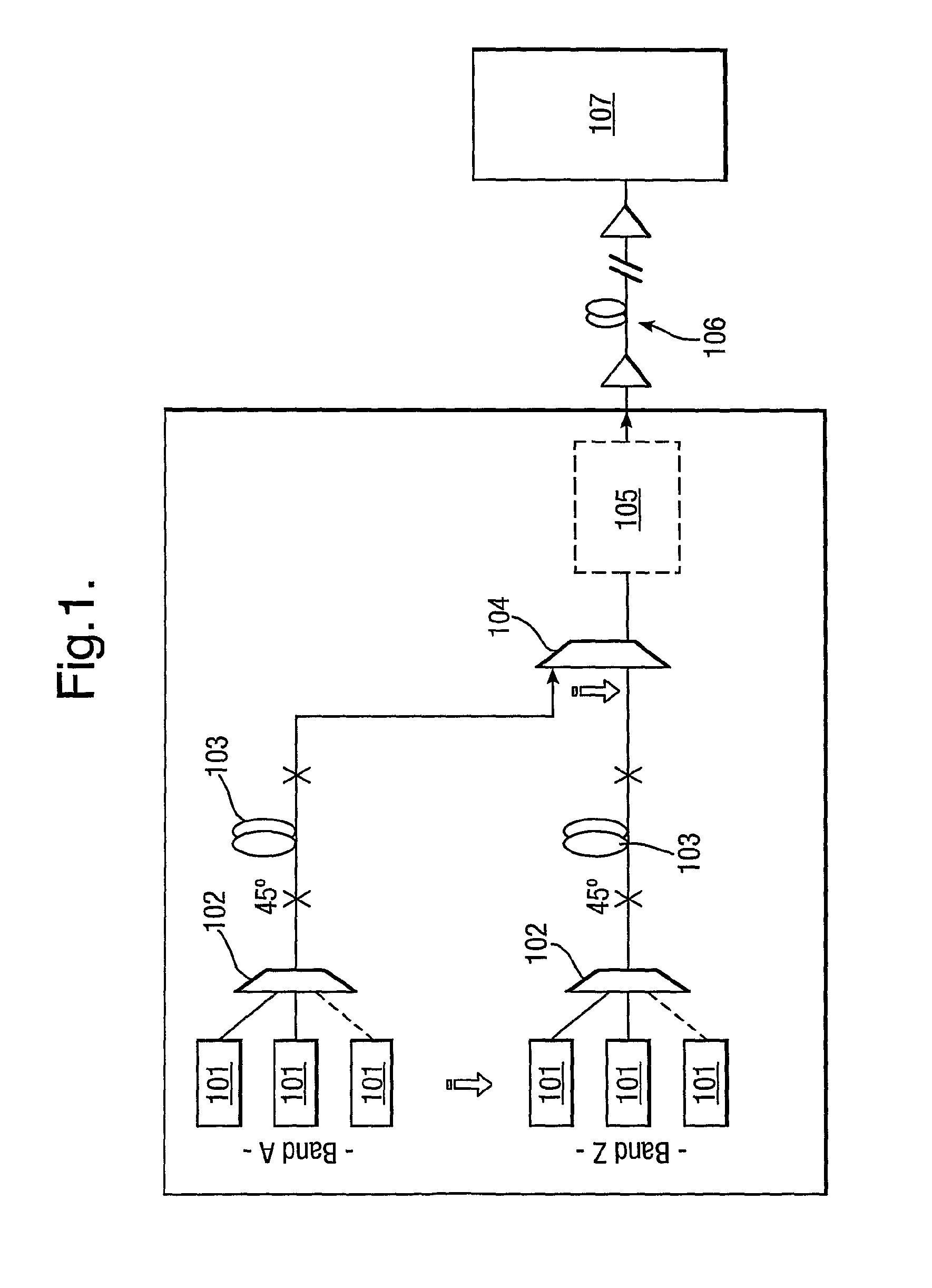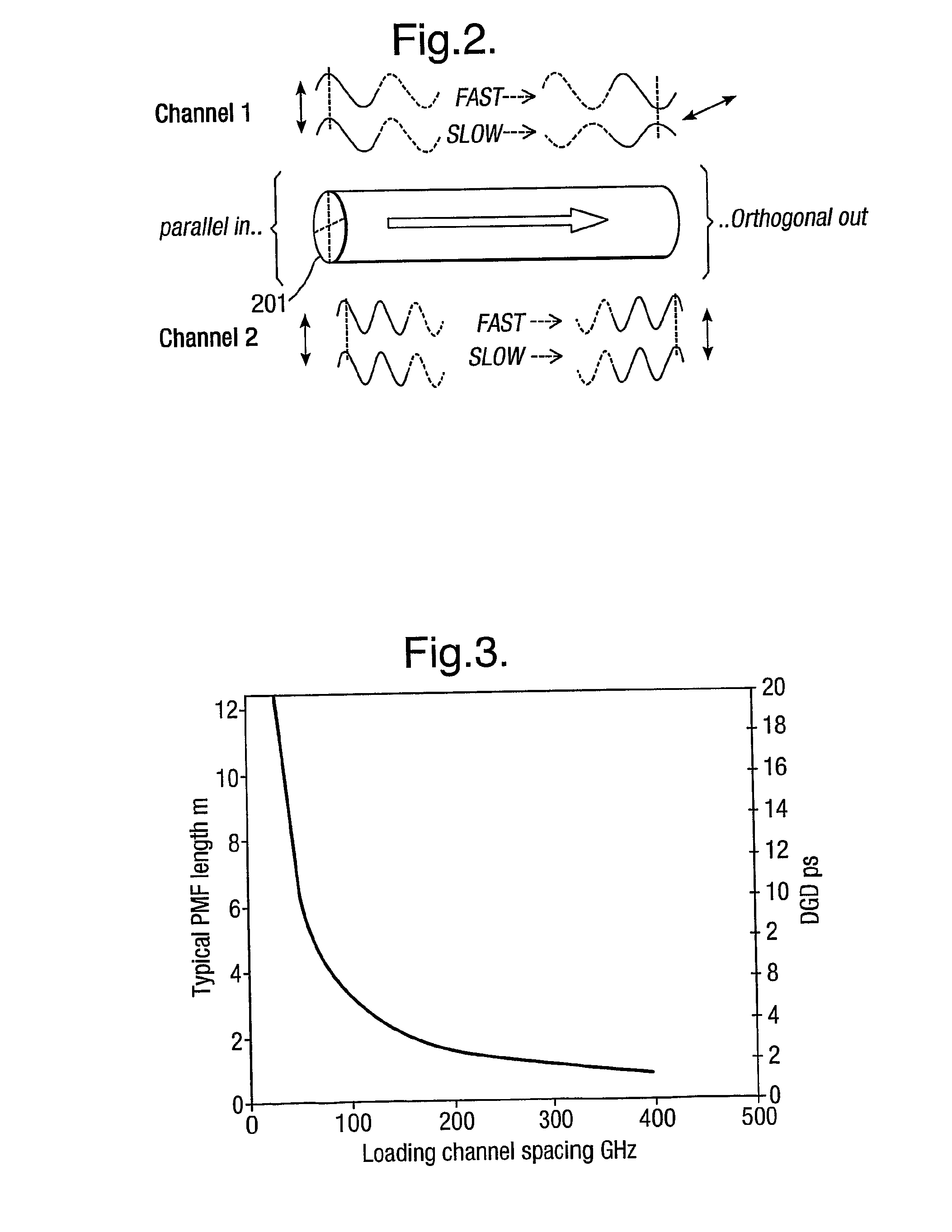Depolarised WDM source
a wdm source and depolarised technology, applied in the direction of fiber transmission, transmission, distortion/dispersion elimination, etc., can solve the problems of limiting the efficacy of wdm signal in transmitting data from transmitter to receiver, affecting the effect of wdm signal in transmitting data, and becoming more significant, so as to achieve effective depolarisation and minimise the net pdg of the link
- Summary
- Abstract
- Description
- Claims
- Application Information
AI Technical Summary
Benefits of technology
Problems solved by technology
Method used
Image
Examples
Embodiment Construction
[0037]FIG. 1 shows a typical example of a Submarine Line Terminal Equipment (SLTE) transmission system. The channels may be any combination of loading and data channels. In the example shown, there are separate “bands” each comprising a plurality of channels. A WDM signal is formed of each band before the bands are multiplexed together to form the final signal.
[0038]As shown, a plurality of channel sources 101 in each band provide parallel polarised optical source signals that are multiplexed together by a polarisation maintaining multiplexor 102, thereby providing a polarised WDM signal. This polarised signal then passes through a DGD element 103 in order that the WDM signal may be depolarised, while the time-averaged DOP of each channel within the WDM signal remains substantial.
[0039]The depolarised WDM signals from each band are then combined by a further multiplexor 104. The combined signal passes through various other aggregate equipment 105 before being launched across a trans...
PUM
 Login to View More
Login to View More Abstract
Description
Claims
Application Information
 Login to View More
Login to View More - R&D
- Intellectual Property
- Life Sciences
- Materials
- Tech Scout
- Unparalleled Data Quality
- Higher Quality Content
- 60% Fewer Hallucinations
Browse by: Latest US Patents, China's latest patents, Technical Efficacy Thesaurus, Application Domain, Technology Topic, Popular Technical Reports.
© 2025 PatSnap. All rights reserved.Legal|Privacy policy|Modern Slavery Act Transparency Statement|Sitemap|About US| Contact US: help@patsnap.com



